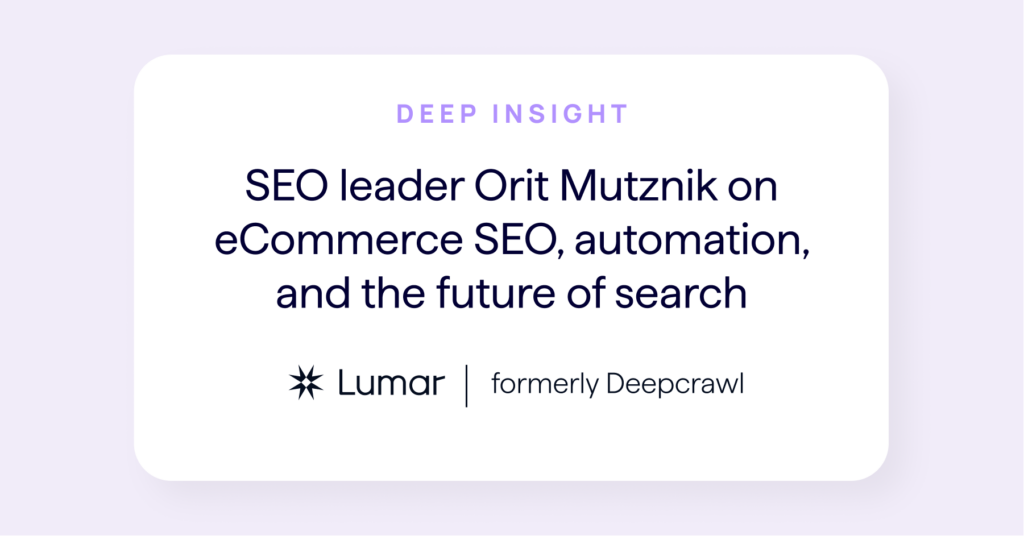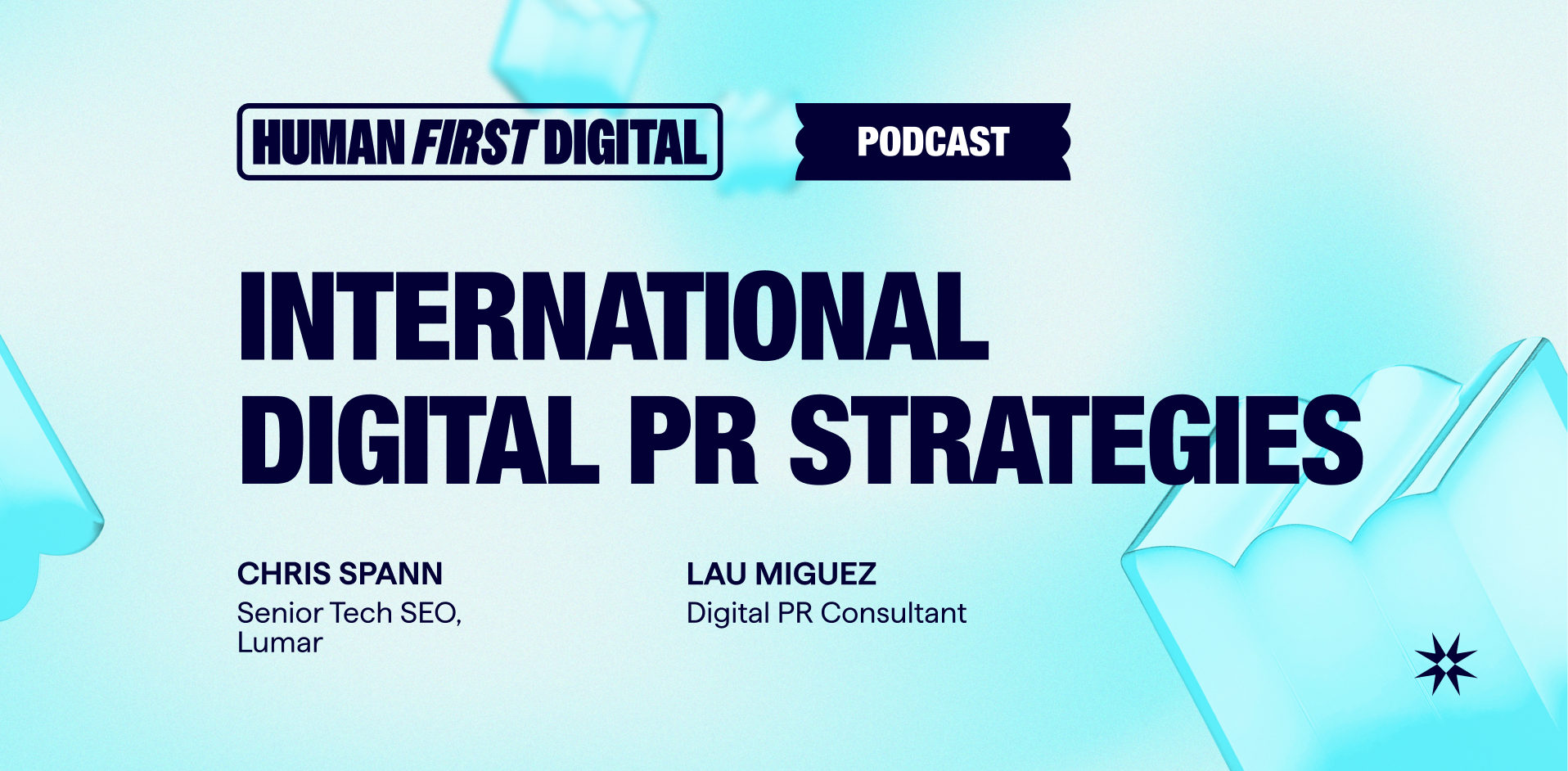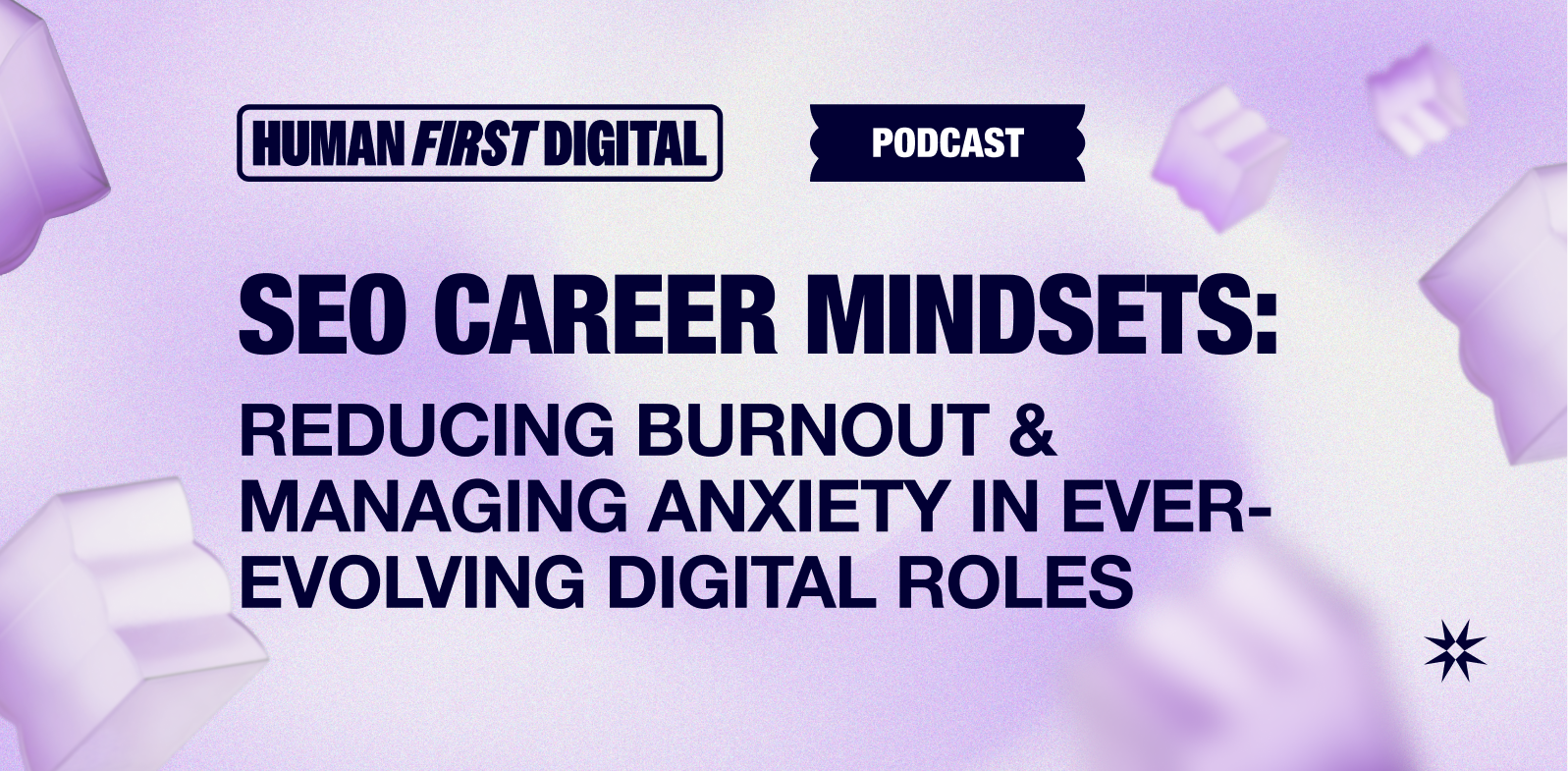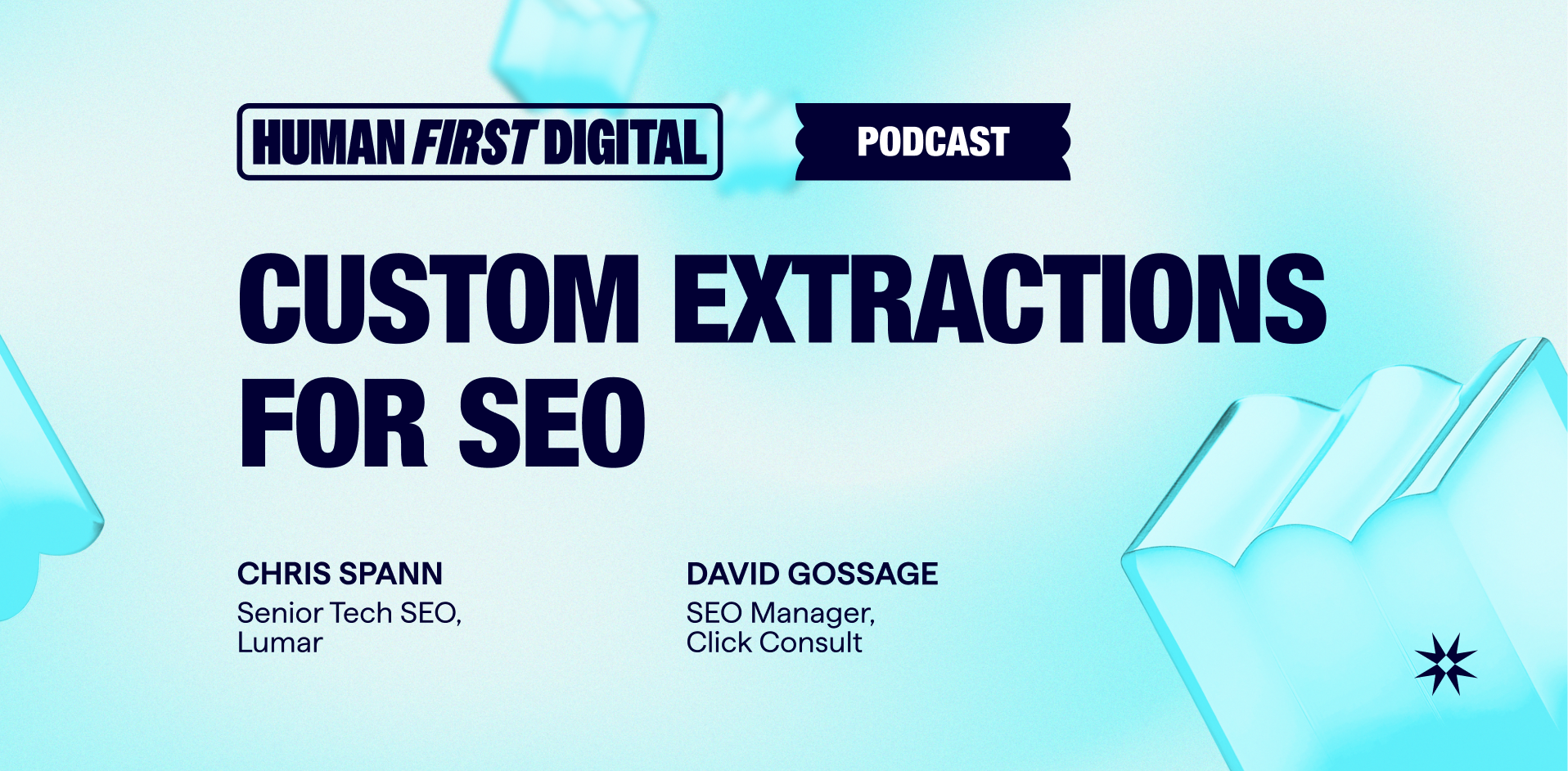This is the first in our series of in-depth interviews with the most inspiring SEO leaders working in-house today.
I’m delighted that I got to speak to Orit Mutznik, Head of SEO at Silkfred – one of the fastest-growing eCommerce fashion retailers – for the first of our Deep Insight interviews.
Orit is, of course, a much-loved contributor in the SEO community, regularly appearing on SEO podcasts and at industry conferences where she shares her vast knowledge, insight, and passion for technical SEO, eCommerce SEO, content marketing, and automation.
Read on to find out more about Orit’s SEO journey, her tips for success in eCommerce SEO, a discussion on automation in SEO, and predictions about the future of search.
Let’s begin.
Orit, How did you get into SEO?
I got into SEO through content. My background was in copywriting and translation, and my first online gig was as a Content Manager in the gambling space. When I worked there, I started getting keyword requirements. That’s where my first interaction with SEO was, and I became curious. I started learning, completed an SEO course, and then got myself a job as a junior SEO in the same company. And then the rest is history. Since then I’ve done the full range of SEO roles, up to my current position as Head of SEO at Silkfred.
What are the biggest challenges in eCommerce SEO?
One of the biggest challenges in eCommerce SEO is duplicate content. This can be as simple as someone using the same copy across different pages – duplicate content on different product pages is a common one in eCommerce.
People can also change the URLs of product pages. In most cases, the old URL still exists as well as the updated one, and this leads to duplicate content.
In eCommerce, there are duplicate content issues everywhere. Some can be solved by educating the people who upload the content. For those that can’t be solved this way, you need to do manual fixes and put rules in place to avoid duplications.
Another common issue lies with site structure and site architecture. Trying to find the sweet spot between a structure or hierarchy that’s neither too flat nor too deep is difficult with eCommerce sites, and can be an ongoing struggle.
Crawling issues can also be a problem. JavaScript is a well-known offender. This relates to the pagination study I published on the Deepcrawl blog last year. At Silkfred, we had a lot of JavaScript issues that stopped Google crawling products that appeared on paginated pages.
As I shared in the study, fixing this issue led to great results for Silkfred, so it’s definitely a good issue to focus on.
What about internationalization in eCommerce?
Internationalization can also be a massive challenge. At Silkfred, we’re just starting on internationalization. But when I worked at eToro, we started with eight languages and evolved to 24 languages during my time there, so I have experience in this area.
For internationalization, the key is to find a good working process. You need to get things right from the start. You need solid technical infrastructure, and you need a good international growth plan. Because sometimes you think, okay, I’ve sorted hreflang, I’ve sourced translations, I’ve planned the URL structure, I’ve got everything covered. And then you release the code, and realize, okay, there are tons of other issues that I hadn’t even considered.
Like, do you put hreflangs on pagination or not? That’s a question I’ve asked in the past where Aleyda Solis helped me, for example. The SEO community on Twitter and at conferences is a great place to ask your questions as there’s so much shared knowledge out there. For international SEO, Aleyda is the best person to follow. And on a personal level, I’ve learned so much from her.
But going back to what I said earlier, you have to try to map out everything possible. It’s a good strategy to start with one international territory, if possible, and discover the problems there. Find your bulletproof formula, and then expand on that. I think this is the best strategy. But also know that there’s a good chance that you will learn more as things see the light of day.
As most of us know, there’s so much that can go wrong with international SEO. But it’s interesting, it’s challenging, and you learn so much from it.
How will Core Web Vitals impact eCommerce?
The iProspect Core Web Vitals Score tool I shared on Twitter recently indicates that eCommerce and fashion brands are going to find it hard. Their data shows that only 5% of fashion sites and 20% of eCommerce sites will benefit from Google’s Core Web Vitals update in the UK alone. But should we look at that and think all is lost? I don’t think so.
On a broader scale, I think the impact of Core Web Vitals is likely going to be felt gradually. Google keeps calming the spirits within the SEO community, which I think suggests that it’s not going to be hugely impactful – at least not straight away.
I personally, however, am taking full advantage of the buzz surrounding this update to get Core Web Vitals work implemented. If I say to my developers it’s not going to be as big as some are predicting, they’re not going to prioritize Core Web Vitals.
Instead, I tell them there’s going to be a Google update, we need to be prepared, and we need to make changes to make sure we pass. That’s how to get things done.
At Silkfred, I’m doing everything possible to pass Core Web Vitals, even if in the end the impact isn’t immediately huge. But if 5% of fashion websites will benefit from Core Web Vitals, I want to be one of that 5%.
Why do you think eCommerce and fashion sites currently perform so poorly for Core Web Vitals?
I think it’s very similar to my pagination study I posted on the Deepcrawl blog, where I showed that 65% of eCommerce websites don’t have user-friendly pagination.
I don’t think it’s because eCommerce SEOs don’t know or don’t care about user-friendly pagination. Of course, there are different opinions about this, and some people still claim that you should block pagination, which is a shame. But what I’m saying is, most eCommerce websites aren’t always ready for change. Because with eCommerce websites, changes are done on a huge scale and are difficult to execute.
I’m sure that there are tons of SEOs out there running around trying to get Core Web Vitals updates done before June, but are unable to because the business has different priorities. How important SEO is in eCommerce varies across different businesses, after all. I think that’s a big part of it, too.
Sometimes you just straight-up can’t improve Core Web Vitals, too, because there are a lot of third-party scripts that can’t be removed for a number of reasons. So you just have to do your best and pray that your best is enough.
How do you make SEO more of a priority within an eCommerce business?
There’s actually a chapter that I authored in BlueArray’s upcoming edition of their Mastering In-House SEO book on this topic!
But to answer directly, to make SEO more of a priority within your business you need to make it accessible and understandable to different parts of the business. You need to advocate for it. And when you start, you need to prioritize small changes that will have the biggest impact.
You can then convince the business that SEO can have a big impact, even when you’re only making small changes. I’d do that not only with key stakeholders but also with the devs that work on changes. When I tell our devs: Look, you did this, it helped me, and it helped the business, they come on board.
So though it’s often best to take baby steps in the beginning, those steps pave the way to much bigger projects that have a much bigger impact.
How do you open the door to developers and build closer relationships between SEO and engineering?
You start creating relationships.
SEOs sometimes diminish the value of developer relationships. I was on a podcast with Garrett Sussman recently where I talked about this. We shouldn’t diminish the relationships with developers. Developers aren’t just delivery people, they have ideas of their own. And they not only know a lot about the technical side of SEO, but they’re also interested in it.
As part of my interview process with Silkfred, I had to submit different SEO roadmaps. I did one that was high-level for senior management, but I also did one for one of the lead devs to ensure that we were on the same page. This was highly technical, and it was incredible to hear the lead dev say, “I’ve been trying to get this happen for years.” Now they can say: “this has SEO benefit”, and you can fight the same fight together.
We’ve got a lot of things done this way: by hearing devs out, understanding what they’re interested in, what they think that should be done, and then backing them up with my expertise.
But the key here is just to talk to developers. Have an open dialogue, understand their roadmaps, see what they care about. You can tap into that.
Speaking the same languages is also one of the other keys to success. When you speak the same languages, they can see that you understand them, and it’s then easier for them to understand you.
When I want things that they don’t understand it’s my responsibility to explain the impact. Not in vague terms, but through explaining the why, offering background information, and speaking to them in their language.
So make everything clear and transparent. Be a nice person and treat them with respect. Be open to their ideas. That’s also how I’ve got devs to run things by me before they release code.
They message me to say “hey, is this okay, from an SEO perspective?” because I said from the start if you have any suspicion that this might hurt SEO performance, run things by me, and I’ll give you an answer quickly so I don’t create a bottleneck. Now they always ask the question, I respond, and we all end up happy because the site doesn’t get destroyed.
What’s the best way to sell SEO to CMOs and marketing leaders?
This is another thing that I did at the start of my time at Silkfred. I showcased case studies of businesses that were at a similar starting point to Silkfred and showed where they got to. Showing potential in this way is something that’s always convincing for non-SEO leadership.
When it comes to prioritizing resources and dev time, which are both often limited in SEO, you 100% have to think in terms of what’s going to move the needle the most.
Selling the value of SEO is hard. But it’s not impossible.
How do you go about managing crawl budget when you’re managing an eCommerce site?
Crawl budget is a challenge for a lot of large eCommerce sites. There are a lot of issues, especially around filtered pages and things like that. That’s one that I jumped on straight away when I started at Silkfred.
In eCommerce, it can be a constant battle between crawl budget and what the business needs. Google does claim that it can handle crawling huge, huge sites, so it’s potentially not a massive issue. Though I realize that some eCommerce websites are bigger than the one I manage.
One thing that I haven’t been able to solve, and I still don’t think there’s a solution for, is paid teams using URLs with parameters, as these are often still crawled. Unfortunately, that’s not something that you can block on robots.txt, because it will impact their work.
But wherever you do see a problem that can help with crawl budget, fix it where possible. If you can’t because it will impact other areas of the business, what else can you do but hope for the best?
Where do you see the future of SEO?
I’ve been learning Python in the last year, and I think automation is going to be huge. I love where it’s going, and I love the things that people share – particularly scripts and articles about automating the boring SEO stuff. Automation is going to 100% become more common.
I’ve already seen people advertising SEO jobs with Python as a requirement. It’s something that people should think about learning because it’s helpful. You can also build awesome tools similar to the ones that I’m trying to build at the moment. So I think automation is going to become more widespread, and the community sharing tools and useful ideas about automation are going to grow with it. Which is great for everyone.
On a separate note, I think Google is going to continue to make our lives difficult. They’re going to go into more niches and SEOs are going to have to get smarter. An example of this is ensuring our websites and content match the user intent of the searcher.
I recently had the pleasure of trying out Suganthan Mohanadasan and Andy Chadwick‘s Keyword Insights tool that helps us uncover searcher intent, and I think that’s very much where SEO is heading. We’re going to have to focus on search intent optimization, along with search experience optimization. These will both be a big part of the future of search.
As someone who is now a Python enthusiast, what advice would you give to SEOs who want to explore automating SEO tasks?
I think that the biggest obstacle in Python is your fear and imposter syndrome.
This was the case for me. I’m hugely inspired by Hamlet Batista, who’s sadly no longer with us. But when I went to him at the beginning of my journey and said “wow, this is amazing, how do you do it?” he said: you can do it, too. I never thought I could do that. But he continued to encourage me. He made me believe in myself.
So that’s where my road to learning Python started. I started a free course on YouTube just to test the water, and now I’m working on my Python dev certification at advanced stages. The next step would be, and I’m still trying to tell this to myself, stop learning and start doing. But I think it’s 100% worth learning Python. I’ve seen myself building things, creating things, and the sheer joy of seeing something you’ve made in action is amazing.
So you just have to stop being afraid and do it. Think about the boring things in your SEO journey, the repetitive things – there’s probably a solution with automation. There’s no greater encouragement than that.
You can also find and use Python scripts that other people wrote to get started. There’s a lot of Python out there, code that you can use yourself, and experts writing them for you like Elias Dabbas, Charly Wargnier, JC Chouinard, Greg Bernhardt, Koray Gübür – who all work so hard for the community. If you can read Python then you can use others’ work and adapt it to your needs.
You don’t have to become a Python expert, you can start by knowing the basics. And the more you learn, the more confidence you build. There’s a super supportive community out there, so just do it, essentially. That’s my tip.
N.B. Since we spoke, Orit has built and launched her free Python Streamlit tool, G-Trendalyser, which you should 100% check out. Click here to give it a whirl.
Finally, in-house SEO leaders often fly under the radar in the SEO community, what advice would you give to those who want to have their voices heard?
Get involved on SEO Twitter. You don’t have to share anything related to your company. Brighton was a bit of an exception in my case, and I had to get approval for that. But generally, I don’t share anything directly related to my day job. I share my thoughts about SEO and eCommerce SEO more widely. I also share memes and gifs, but that’s because it’s me.
In terms of getting my own voice heard, I’ve always been a collaborative person, and I’ve always been an SEO geek. When I worked in companies before, I would always be the one to constantly share SEO updates. No one cared as much as I did. But with SEO Twitter, I can be myself, and it’s appreciated. Before SEO Twitter, I just didn’t have the stage.
Going back to the question, if you share your knowledge, you’ll find a home. If you’re working in-house for an eCommerce brand, for example, why not share your thoughts and insight on things that other eCommerce SEOs find challenging? Other SEOs will find it useful. Take advantage of your knowledge, build some tools, and share them with the community.
Your story is interesting. People are interested in what you have to say. Like I said about Python, don’t be afraid, just do it.





